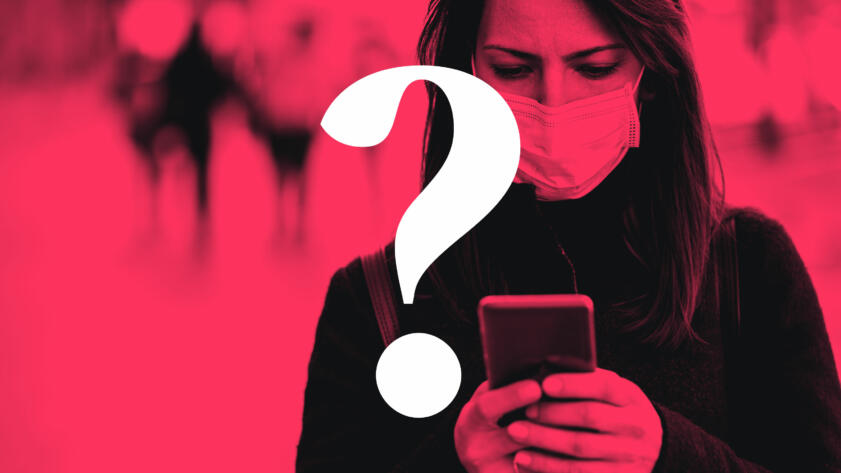As COVID-19 continues to spread around the world, offices, schools, and even entire cities have been shut down, forcing people to alter the way they live and work.
Millions of employees and students are having to carry out everything from staff meetings to math classes online every day. And in an effort to mitigate hospital overcrowding and keep patients out of cramped waiting rooms, the government is urging patients to seek consultations through phone calls and video conferencing.
But not everyone in the U.S. has access to these online services. There are more than 14 million people without any internet access and 25 million without the faster and more reliable broadband access, according to a 2018 Federal Communications Commission study.
And that may actually be an undercount. The FCC data is based on census blocks and not households. The data may show that a broadband provider serves a particular census block, but not every household in that block may access that service.
Microsoft has said its research shows that if broadband access was counted more precisely, the number of Americans without it would be closer to 163 million people.
Angela Siefer, the executive director at the National Digital Inclusion Alliance (NDIA), an organization that focuses on digital inclusion and equity, said the lack of internet may force people to go outside and ignore quarantine or shelter-in-place guidelines.
“It’s a lot easier to stay home when you have internet,” Siefer said. “That’s how you survive, and [without internet access] you can’t do your homework, you can’t order food from the grocery stores. If you are not having your basic needs met, then you’re going to go out and take care of those.”
Who Doesn’t Have Access
The U.S. ranked 10th among 28 countries in broadband download speeds in 2016, behind Luxembourg, Japan, and Iceland, according to the FCC. And that could also be an overstatement: The FCC data is based on the speeds that internet service providers advertise, not what is actually in place.
And U.S. consumers consistently pay much more for access to broadband than users in other countries. Jonathan Mayer, a professor at Princeton University who served as chief technologist in the FCC during the Obama administration, said internet is so expensive in the U.S. because of a lack of competition.
“It can be very difficult to start an ISP [in the U.S.],” said Mayer. “In some other countries there are a large number of local or semi-local ISPs that fill in the gaps where national ISPs don’t have coverage or have competed with the national ISP market. That phenomenon hasn’t really played out in the United States.”
The lack of reliable and affordable internet access is especially severe in rural communities, where only two out of every three people say they have broadband access, according to a Pew Research Center survey conducted in early 2019. The survey also shows that people in rural communities are less likely to have a home computer, smartphone, or other device that provides access to the internet.
Americans in Rural Communities Are Less Likely to Have Home Broadband Access
Percent of Americans who say they have home broadband
0%
20%
40%
60%
80%
100%
2000
2005
2010
2015
2019
School-aged students are also affected. One study of students in 2018 found that low-income students, first-generation college students, and students of color were more likely to have access to only a single device, such as a home computer, tablet, or smartphone. For another 10 percent, that device was only a smartphone.
Poorer neighborhoods often don’t have the same access to broadband as affluent ones. According to a 2016 investigation by the Center for Public Integrity, poor families were five times less likely to have access to high-speed internet than their affluent counterparts.
In 2017, neighborhoods in Dallas and Cleveland with high poverty rates were found to have slower download speeds because AT&T didn’t provide those areas with up-to-date broadband improvements, according to studies done by NDIA.
In a statement to The Markup, AT&T spokesperson Jim Kimberly said that the company doesn’t make its infrastructure decisions based on household income or race, and that AT&T has more than doubled the number of locations that have access to fiber internet in Southern Dallas since 2017.
What Happens When There Is No Internet During a Crisis
In an effort to reduce the spread of the coronavirus, schools around the country have shuttered, and educators are trying to conduct classes online—a challenge in many districts where students may not have home computers.
Even without the current public health crisis highlighting this problem, access to broadband and home computers has been considered key to student success. A 2018 Pew Research Center analysis showed that poor school-aged children are less likely to finish their homework than those who live in more affluent areas, because they lack broadband internet access.
The problem is starker for low-income black and Latino households. Having a computer can be the difference between finishing high school or not. Students with a computer at home were more likely to graduate than those who didn’t have one, according to a Western Economic Association International study.
“We don’t have systems in place in the U.S. to make sure that everyone does have access to the internet,” said Siefer of the NDIA.
Is Anything Going to Change?
On March 13, FCC chairman Ajit Pai called upon internet service providers to agree not to terminate service for users who cannot pay their bills due to disruptions caused by the coronavirus outbreak and to take measures such as waiving late fees and opening Wi-Fi hotspots. U.S. senators have also written letters to telecom companies asking them to ease caps on data usage and suspend fees and throttling on overages, and urged the FCC to allow schools to use their broadband funds to provide free Wi-Fi to students.
As a result, some internet providers—Comcast, Charter Communications, AT&T, among others—said they are providing free Wi-Fi for everyone through hotspots around the country, removing caps and overcharges on data plans, and suspending disconnects and late fees for the next 60 days.
But some say achieving widespread broadband access will require aggressive government intervention. Susan Crawford, a Harvard professor and an adviser on science and technology policy under the Obama administration in 2009, argues that the internet must be regulated as a utility, like electricity.
“A utility is not a luxury,” Crawford wrote last year in Broadband Communities magazine. “Utility services can be sold by private or public entities, but they are always subject to public obligations to reach everyone at a reasonable price, with a service meeting public quality standards.”





